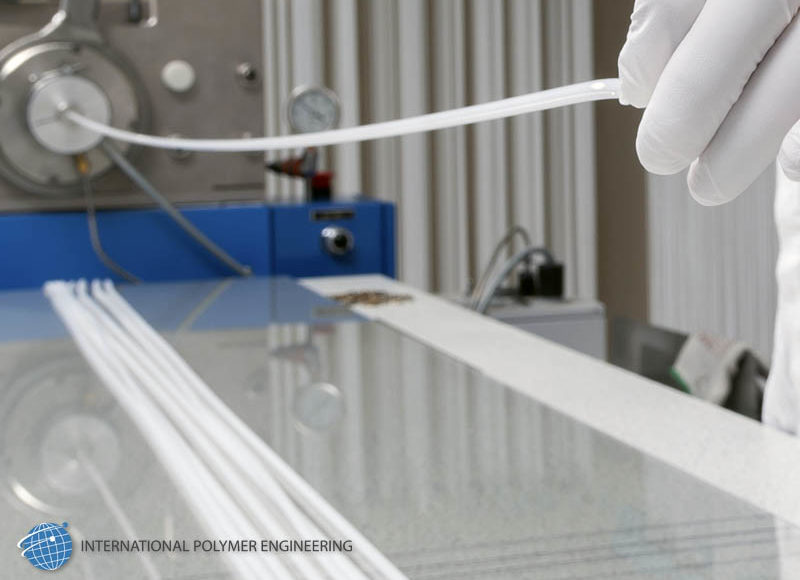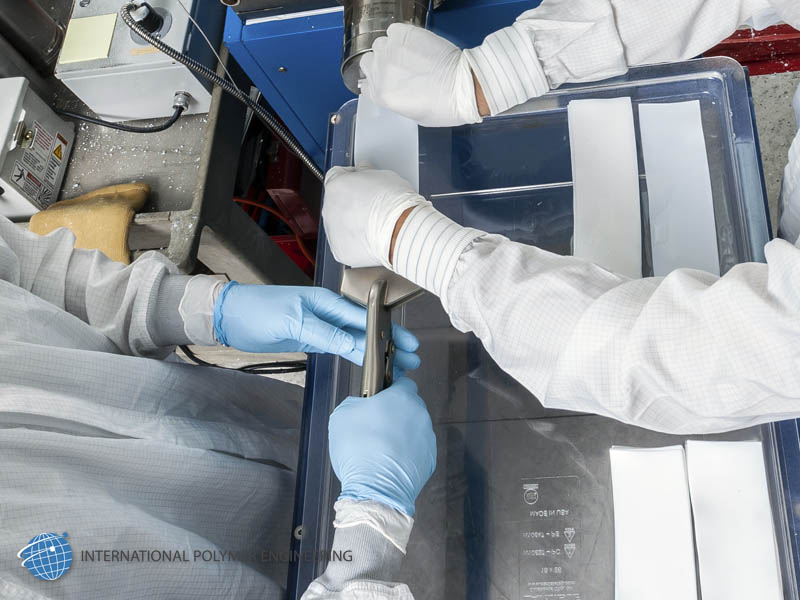
Do you Know the Top 5 Common Mistakes Engineers Make When Designing For ePTFE?
PTFE was discovered by accident in 1938 while an engineer was attempting to make CFC refrigerant. Polytetrafluoroethylene (or PTFE) is a particularly versatile ivory-white and opaque plastic fluoropolymer. ePTFE (or expanded PTFE) is a processed form of polytetrafluoroethylene and is a non-woven, open pore Fluoropolymer plastic.
The biggest advantage of ePTFE is its versatility and the range of applications it is used for. In addition, the number of different industries that can take advantage of this material is simply staggering. ePTFE can have massive benefits in both manufacturing and engineering, however its non-woven, open pore Fluoropolymer plastic is suitable for the crucial demands of medical applications and other critical industries.
ePTFE offers exceptional physical and chemical properties. It is the combination of these physical and chemical properties that makes ePTFE a great candidate for multiple critical applications. It can be strong, rigid, thick, thin, flexible, or permeable combined with other properties depending on the ultimate use. It is a highly flexible, lubricious, chemically inert, hydrophobic plastic.
Physical/Chemical Properties:
- Micro-porous
- Biocompatible
- Implantable
- Air permeable
- Low friction coefficient
- Chemically inert
- UV resistant
- Water tight under low pressure
- Low dialectic constant
- Hydrophobic
- Soft and flexible
Applications:
- Medical devices
- Air/fluid filtration
- Aeration
- Critical fluid transportation
- Electrical insulation
With all that ePTFE offers, engineers still need to be careful when planning the parts created from the materials. What are the top 5 most common mistakes engineers make when designing for ePTFE?
- Selection of the porosity
- Bonding
- Functional properties
- Dimensional tolerancing
- Application requirements
1.) Selection of the Porosity –
Porosity of the tubing can determine the flow rate or gas exchange through the product. This is needed for the use in filters, aeration, degassing, and gas monitoring devices (like protection of CO2 sensors). Porosity can determine the cellular response to ePTFE. ePTFE porosity can be modified for implant devices for the creation of barrier type devices or for the promotion of cellular ingrowth into the structure. Porosity can also influence the wear resistance, lubricity, and flexural capabilities of tubing depending on the application. Higher density ePTFE would have a greater wear resistance, improved tool passage, and prevent kinking of tubing for bending sections. This is in comparison to lower density applications.
2.) Bonding –
Bonding to ePTFE can be difficult due to
the chemical resistance of the tubing. Chemical, corona, and plasma etching (or
other surface modifications) can improve the adhesion of various adhesives.
There are also chemical primers that can be used along with the adhesives to assist
in bonding. However, due to its highly porous micro-structure, adhesives in the
correct viscosity can be used to migrate into the micro-structure that will
create a mechanical bonding location. Various polymers can also be bonded into
the micro-structure through standard reflow processing methods. Higher
porosities of tubing tend to bond better than lower porosities.
3.) Functional Properties –
The ePTFE material function will change dramatically with the change in material porosity. The functional properties will change based on the dimensional requirements and its intended use. Higher density material is stiffer, has higher tensile strengths, improved flexural capabilities without kinking, and more wear resistance for instrument covers, barrier membranes, or bending section applications. Medium porosities are used in implant devices that require high flexibility, a softer and more compressible material that may require a positive cellular response to surrounding tissues. Low porosities are used when high flow rates are needed in filtration or gas exchange barriers applications or when high cushioning/protection is needed in various devices.
4.) Dimensional Tolerancing –
Due to the high flexibility, compression, and high air volume of the ePTFE materials dimensional measurements of these materials can be difficult. Non-contact or low pressure measurement devices are typically used. The unique micro-structure can also facilitate the compression or retraction of the material in the extrusion direction. This assists in the high flexural rate of tubing but can alter the product length. ePTFE will have a much higher tensile than typical PTFE products but will have a relatively weak radial strength. When designing instrument or bending section covers, it is recommended to under size the ePTFE tubing which will allow for a tight fit of the ePTFE to the device that it covers. IPE has developed customized processing for tubing that can achieve tighter dimensional tolerances than most manufacturers.
5.) Application Requirements –
The application or use of the ePTFE can dictate the material density, the bonding/attachment requirements, functional requirements, and the dimensional specifications for various configurations of ePTFE. The engineering team at IPE can assist in the selection of the best ePTFE for each customer’s application and use.

Whether it is used for covering implants as a barrier or providing a soft supple capsule for implantation, ePTFE is rather unique. ePTFE does not contain any elastic properties that can alter flexural performance and stability of components or instruments. The qualities of high flexibility, chemically inert, biocompatibility, and low coefficient of friction provides unique and uncompromised performance of this material.
For industrial applications where high temperature, hydrophobic, chemical inertness, and high lubricity are needed, ePTFE has proven to be an excellent material for aeration, high-temperature sensor covers, low-pressure critical fluid passage, high-temperature gasket, chemical barriers, and nonstick cover applications.
IPE (International Polymer Engineering) is one of the only plastic extruders who specialize in making custom ePTFE products. When looking for a highly flexible, lubricious, chemically inert, hydrophobic plastic for medical applications, very few non-woven plastics can meet or exceed the flexural properties needed in barrier, instrument delivery, and bending sections of typical medical implants and instruments like our ePTFE FluoroFlex™.
As an ISO 13483:2016 certified company, we ensure the most stringent quality standards. We strive to be your total solution provider – we also offer design & development services, material testing & analysis, and class 10,000 clean room processing.
If you are interested in FluoroFlex™ ePTFE for any of your projects, if you’d like to find out more information about the properties of ePTFE, or if you need assistance designing your project with ePTFE please contact us and let’s chat about your application.
